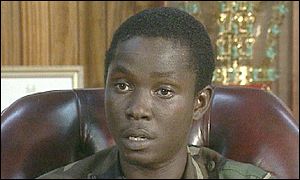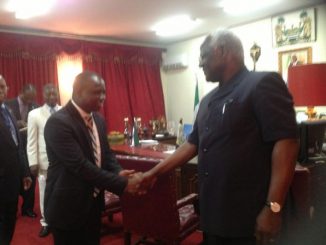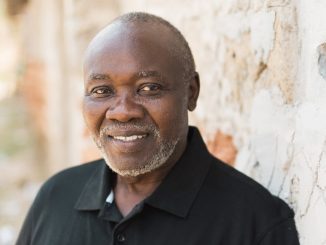34 years after the execution of Mohamed Sorie Fornah and 14 others

By Sheku Dauda Bangura
Thirty four years ago, July 19 1975, to be exact, a sad chapter was written in the political history of Sierra Leone when Dr. Mohamed Sorie Forna, one of Sierra Leone’s most brilliant politicians, together with Lieutenant Habib Lansana Kamara, Ibrahim Bash Taqi, Brigadier David Lansana, and Paramount Chief Bai Makarie N’silk, were executed at the notorious Pademba Road Prison in Freetown.
The piteous spectacle outside Pademba prison, where the men who had been killed by hanging were displayed for about an hour to send a strong message, sent shock waves throughout Sierra Leone and even beyond.
The marathon trial of Mohamed Sorie Forna (Siaka Stevens’ former Minister of Finance) and fourteen others riveted the nation. And the eventual execution of Dr. Forna and Ibrahim Taqi (former Information Minister), two distinguished Sierra Leoneans who played a pivotal role in the All People’s Congress’ election victory in 1967 – was not only a burden of grief to family and loved ones, but a terrible loss to the entire nation. It was a national calamity that had immediate and far-reaching repercussions. The executions alienated the support of many northerners, especially at Tonkolili (an APC political stronghold during the 1967 General Election) and fueled the flames of popular discontent against Siaka Stevens.
Stevens’ popularity as leader of the All People’s Congress and Prime Minister of Sierra Leone started to erode in 1971 when his government executed Brigadier John Bangura – the man who literally handed over power to him in 1968 – together with Jawara and Kolugbonda. The three were the first high-ranking officers to be executed in Sierra Leone after independence in 1961. Sources very close to prison authorities then have it that Brigadier John Bangura wept on the eleventh hour of his execution – finding it hard to believe that Siaka Stevens, the man he handed power to, turned down his plea for mercy. It was also revealed that Bangura never faced the gallows; he was beaten to death when he refused to make his last walk to the gallows. What a terrible way to end, for a decorated officer that was held in high esteem!
Dr. Mohamed Sorie Forna
On December 31, 1992, the tragedy of 1975 was revisited when the National Provisional Ruling Council (NPRC), a de facto government, headed by 27-year-old Captain Valentine E. M. Strasser, executed 29 people, among whom were James Bambay Kamara, Inspector General of Police, and Sandhurst-trained soldier James Yayah Kanu, who was field commander in the war against rapacious Liberian rebels and Revolutionary United Front fighters. The brutal manner in which Bambay and twenty eight others were executed – including torture, mutilation, the pouring of acid and the burial of victims in a mass grave, left many Sierra Leoneans screaming: “monstrous injustice – a senseless massacre!
Valentine Strasser
Captain Valentine Strasser, a young man with a short-lived dancing career and little more than a high school diploma, who was hailed as a hero on April 29 1992, lost the support he initially had when he toppled the effete regime of Joseph Saidu Momoh. Captain Strasser and his fellow young officers (in their twenties), from the war front, who forcibly took over the affairs of State, made a big political blunder by extra-judicially executing Bambay and others. Like Siaka Stevens, Strasser’s popularity took a nosedive after the gory killings of one of Sierra Leone’s finest, Col. Kawuta Dumbuya, popular movie actor and journalist Salami Coker, a palm wine tapper, and an innocent woman. Reacting to the executions, the late Brigadier A.T. Juxon Smith, Sierra Leone’s first military head of state, had this to say:
“The events and actions on April 29, 1992, which led to the formation of the NPRC, is an act of treason. I therefore cannot fathom how a treasonable organization can accuse, try and execute Sierra Leone nationals for treason. It is plain simple murder for which the NPRC collectively and individually will have to answer to the people of Sierra Leone in a court of law when the day of reckoning comes, however long delayed. I hope the NPRC has kept the transcript of the trial and that a genuine copy has been deposited in the archives.”
To this day, no single NPRC officer has been brought before a court of law in Sierra Leone for murder. However, SAJ Musa, believed to have been the mastermind of those massacres, was killed around Waterloo while leading a battalion of rebels and renegade soldiers to dislodge the SLPP government. Captain Valentine Strasser, who was Chairman of the NPRC, is believed to have gone mad as result of all those curses that have hurled at him. The others, though not mad, have been subjected to a whole lot of insults and public humiliation. Tom Nyuma, considered to be “the strongman of the NPRC,” was shipped out of the US. During the 2007 election, he was seriously manhandled by a former colleague, Idrissa “Leather Boot,” for (allegedly) attempting to assassinate APC presidential candidate Ernest Bai Koroma while on a campaign trail in the southern province.
The swift trial and hasty execution of 24 soldiers for serving under the AFRC/RUF junta (which toppled the less than one year old elected SLPP government on May 27 1997) by the Sierra Leone People’s Party Government headed by Alhaji Ahmed Tejan Kabbah, triggered a firestorm of condemnation from Amnesty International and Human Rights Watch. The executions, which occurred on a Monday in October 1998, came as a real shock to the then United Nation’s Secretary General Kofi Annan, the European Union and many in the International Community who played a role in the restoration of Kabba. Prior to the execution of the 24 soldiers, ill-guided enthusiasts of the SLPP had embarked on a pogrom. All those suspected of having ties with the AFRC/RUF junta were rounded up and set on fire. A car tie was placed around the neck of the victim; petrol was poured and then set ablaze. They called it “neck-lacing” SLPP style!
Aside from the erudite Islamic Scholar Sheik Mustaba of the Fourah Bay Community, most of the victims of these diabolical atrocities were northerners: Mohamed Sakoma Bangura, a business man, Temne Tribal headman in Freetown Abu Black, Alhaji Musa Kabia, and “Tassman.” Leaders of the SLPP have neither dissociated themselves from nor come out to condemn those gory killings. And this may be one of the reasons why the grand old party did not fare well during the 2007 elections in the western area, which is dominated more by northerners, especially on the east-end of Freetown.
Exasperated by the scale of destruction, in the wake of the restoration of the SLPP government by Sandline mercenaries operating under the auspices of ECOMOG, the people of the Western Area decided to express their displeasure and ire by not voting for the SLPP. Despite the huge amount of money that was pumped into the campaign – bribing voters with money and a bag of rice – the SLPP could not win a single seat in Freetown and its environs. This is going to play out again in the 2012 General Election.
If John Oponjo Benjamin, the SLPP Chairman, is really serious about returning his party to power in 2012, he should first of all take the bold step of apologizing to the people of the western area and all those people whose loved ones were killed in cold blood by SLPP zealots. In his quest to become the president of Sierra Leone, Ernest Bai Koroma of the APC apologized to Sierra Leoneans for the mistakes made in the past by his predecessors. By so doing he was able to win the admiration of the people as “a man who is honest and deeply committed to move Sierra Leone forward.”
It is necessary to reflect on the 1971, 1975, 1992 and 1998 executions to fully understand the rage, carnage, savagery and terrorism that gripped Sierra Leone from 1991 to 1999. The Revolutionary United Front Rebel War that erupted in 1991 in Kailahun on the eastern region of Sierra Leone is the cumulative effect, or rather, the by-product of all the executions that have taken place in Sierra Leone. There is undoubtedly a linkage between the RUF war led by Foday Saybana Sankoh and the execution of Bangura, Kolugbonda and Jawara.
Foday Saybana Sankoh who joined the Sierra Leone army in 1956 together with former president Joseph Saidu Momoh, was involved in the 1968 coup against the National Reformation Council headed by the late Brigadier Andrew T. Juxon-Smith. Sankoh’s close ties to Brigadier John Bangura got him involved in the 1971 abortive coup that resulted in the execution of John Bangura. Then a corporal in the army, Sankoh was jailed for seven years and dishonorably dismissed from service. Consequently, he nursed this personal grudge against Joseph Saidu Momoh, who succeeded John Bangura as Army Force Commander, and who Sankoh accused as a traitor – for staging a counter coup against Bangura with the help of Guinean soldiers.
In addition to his personal grudge against Momoh, who succeeded Siaka Stevens as president in 1985, Sankoh had this deep animosity against the APC government that sent him to prison, the destruction of which became his obsession after his release from prison. He went to live in Segbwema, believed to be his maternal home, where he started a new life as a photographer. Within a very short time he attracted the attention of the young men of the town, the students and the unemployed, because of his fiery political ideas. It was at Segbwema, an SLPP stronghold, that Sankoh formed a political study group that metamorphosed to the RUF – drawing support from the rural poor, the urban unemployed; the embittered and downtrodden masses. With the promise of abundant loot, the RUF, a rag-tag army that included ten-year-old gun-toting boys and girls, went on the rampage; killing, maiming, raping and committing all sorts of unspeakable crimes.
Joseph Saidu Momoh’s inability as president to put in place robust economic policies that will turn the ailing economy around, and meaningful political reforms that will ensure equity and justice for all, played to Sankoh’s advantage. The Revolutionary Front was formed to destabilize the government of Momoh. The eastern part of Sierra Leone with SLPP diehards opposed to APC rule, especially after the execution of former vice president Francis M. Minah – served as the natural starting point for Sankoh’s insurgency. On March 26, 1991, Sankoh’s “freedom fighters” stormed the Kailahun armory and burst through the government’s seemingly impregnable defense in the south-east, precipitating a long and protracted war with government forces.
It was a settling of scores that went too far. Instead of the freedom that he promised to bring, Sankoh brought untold death and destruction. Innocent Sierra Leoneans bore the brunt of Sankoh’s political eccentricity as whole towns and villages were razed to the ground; thousands were killed, a countless number maimed and injured, almost half a million rendered homeless or displaced – not to talk about the infrastructural damage in the millions of dollars.
Looking back at those woeful days, those days of general insecurity and uncertainty, one can say, with certainty, that there were no winners in that senseless war. There were many casualties on both sides – government forces as well as RUF rebels. As a matter of fact, there were more losers than winners. Innocent Sierra Leoneans suffered most. To borrow a proverb from our African elders: “When two elephants fight to whom does the grass complain?”
Henceforth, our leaders must endeavor to be transparent and accountable to the people. The use of repressive and oppressive measures to stay in power only provides ammunition for political eccentrics like Foday Sankoh. Our leaders should learn: “No mass arrests, treason trials, court martials and executions will put an end to military governments and other unconstitutional methods of destabilizing an unpopular government.” The best way to prevent coups and insurgencies is to have in place those institutions that will allow for the peaceful removal of an unpopular government – free and fair elections. There must be in existence a vibrant and viable opposition.
Having gone through the traumatic effects of a brutal war, Sierra Leoneans should now make a conscious and determined efforts not to go back to those dark days. We must stand up for what is right; stand up against the banal ravages of political brutality, against corruption, incompetence and the arrogance of power. Our leaders should control their urge toward vindictiveness, and endeavor not to create a thuggish army to ensure an indefinite stay in power. Rather, they should find a way to share the state’s meager resources.
Never again shall we allow the mistakes of the past to be repeated. Never, Never, Never again!




